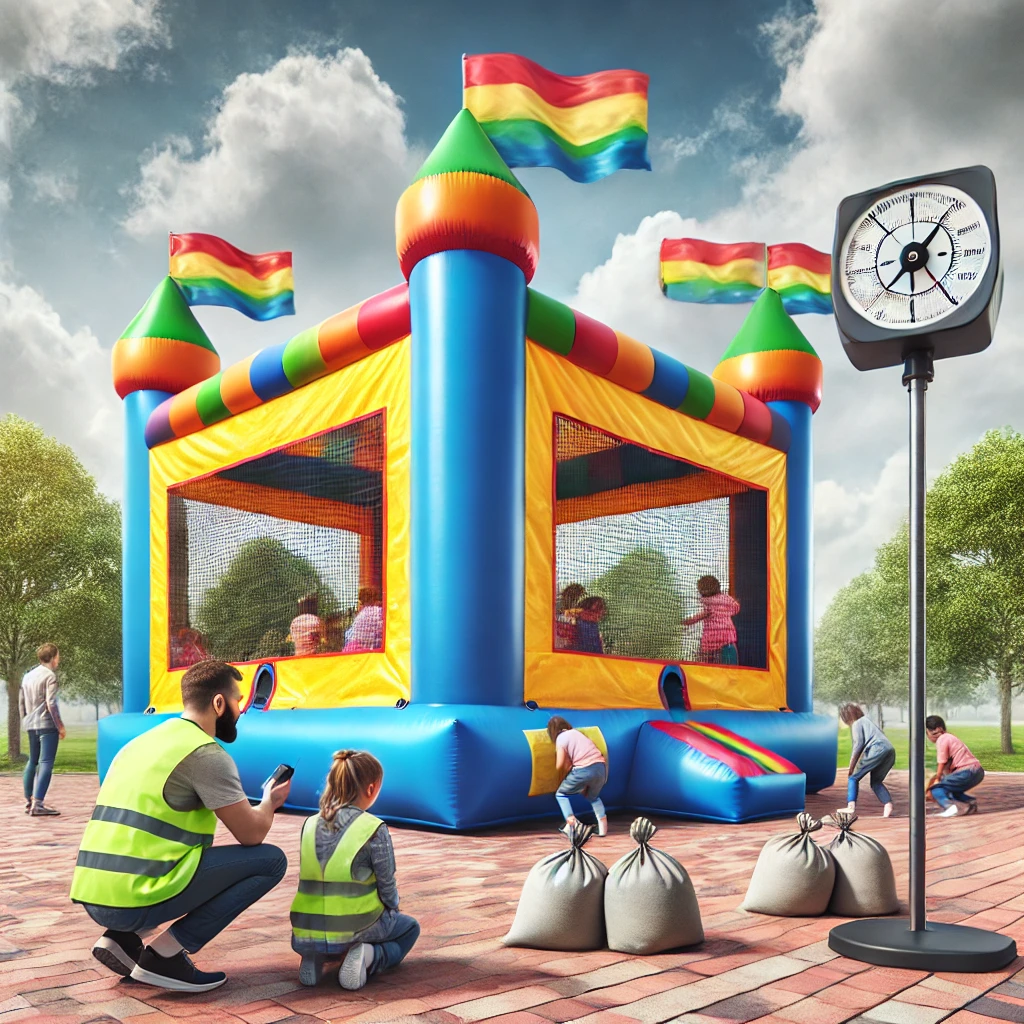Bounce House Safety in High Winds: Bounce houses provide hours of entertainment for children, making them a staple at parties, school events, and festivals. However, safety is a crucial consideration, especially when wind speeds pick up. High winds can turn a fun-filled experience into a dangerous situation if proper precautions aren’t taken. Understanding the risks and following safety guidelines can help prevent accidents and ensure that everyone has a fun, safe experience. For more tips on safe inflatable rentals, check out our bounce house safety guide.
Bounce houses are designed with lightweight materials such as vinyl and PVC, allowing them to be inflated and transported easily. However, this lightweight nature also makes them susceptible to strong wind gusts. If improperly anchored or used in unsafe weather conditions, bounce houses can lift off the ground, tip over, or collapse, leading to potential injuries.
According to Hero Kiddo (https://herokiddo.com/blogs/news/wind-hazards-and-bouncy-castles-how-to-protect-children), wind hazards should be taken seriously, as even moderate gusts can affect the stability of inflatables. In extreme cases, improperly secured bounce houses have been lifted by strong winds, causing serious injuries to children and even fatalities.
Different manufacturers have specific guidelines regarding wind speed limits for bounce house operation, but general industry recommendations state:
According to Happy Jump (https://happyjump.com/blogs/news/bounce-house-safety-guidelines), using inflatables in winds above 20 mph is highly unsafe, regardless of anchoring methods. Even short bursts of strong wind can compromise stability.
Before inflating a bounce house, check the weather forecast for wind speeds, rain, or storm warnings. Even if conditions seem favorable at the start of an event, wind speeds can change rapidly. Consider using a handheld anemometer to get real-time wind speed readings at your location.
Proper anchoring is essential for bounce house stability. According to HEC Worldwide (https://hec-worldwide.com/pages/owners-manual), bounce houses should be secured using heavy-duty stakes at least 18 inches long, driven deep into the ground. For setups on concrete or asphalt, weighted sandbags should be used at all anchor points to keep the inflatable stable.
If wind speeds reach 15 mph or higher, begin preparing for evacuation. If speeds approach 20 mph, stop use immediately and deflate the bounce house. Keeping an inflatable operational in high winds increases the risk of accidents.
A trained adult should always monitor the bounce house. They should be responsible for ensuring that all safety guidelines are followed, checking for sudden wind changes, and taking immediate action if conditions become unsafe.
Children and guardians should be aware of the importance of following safety instructions. Rules such as limiting the number of participants inside, preventing rough play, and exiting immediately if winds pick up can help reduce risks.

Bounce houses offer exciting entertainment, but safety should always come first. Monitoring wind speeds, using proper anchoring methods, and following manufacturer guidelines will help prevent accidents. By staying proactive and informed, you can ensure a fun and secure experience for children and peace of mind for parents and event organizers.
We Make Smiles and Memories
Copyright © Patriot Fun Jump & Party Rentals LLC Maurice LA All Rights Reserved | Privacy Policy & Terms and Conditions|
Provide an email address here to recieve our free party planner!
If you are taking measurements for a structure such as a building or fence, please provide the height of the structure here. If height does not apply to the wash, for instance for a gutter wash, leave this field empty. Please note if you enter a value here after taking measurements, you will need to take measurements again.